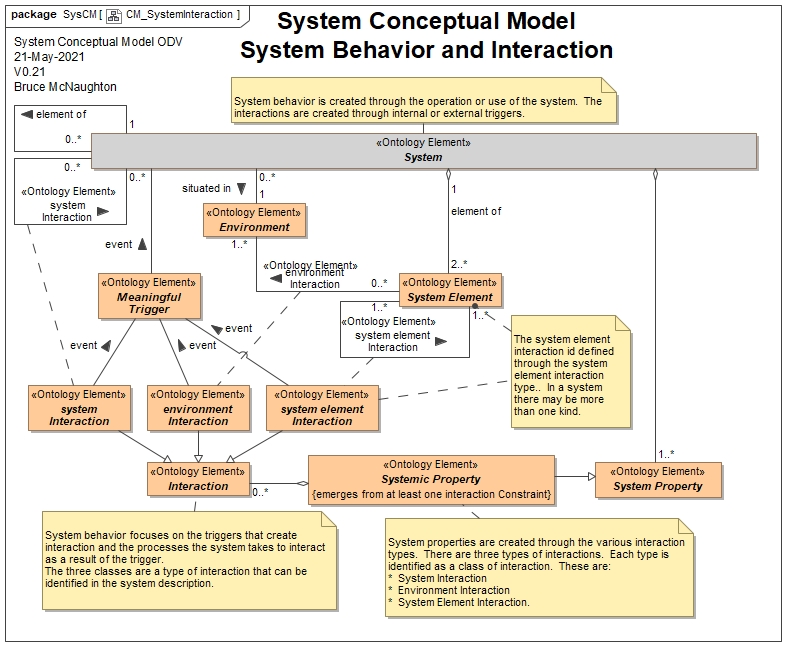View: System Behavior (Structural Changes)
The System Structure (Pattern of Organization) is a logical or static view of the structure or pattern of the system. Behavior is generated through the interaction of the system elements or parts. This means that we are modelling or interacting with a living or operational system that embodies the system structure or pattern of organization. In order to establish the behavior of the system or system-of-interest, some understanding of the physical configuration of the system elements and the interactions (interfaces and mechanisms) of the system is necessary. This allows us to understand the behavior of the system at various points in time as the system is living, operational, or in use. This is also important when designing a system and exploring various alternative ways of developing the system.
The following model highlights the types of interaction that generates the system properties.

The Behavior (Structural Changes) section describes a specific instance (configuration of components) of a system structure that results in systems behaviour. The system behavior includes descriptions of the following as needed:
- a specific configuration or embodiment of a system structure (pattern of organization) (e.g. specific system elements or components, their relationships)
- including any mathematical methods or characteristics of specific interaction types
- the triggers arising from a meaningful disturbance
- the process steps or sequence and any interaction in response to a specific trigger
- any models or data supporting the response along with any mathematical methods used.
- Any behavioral system or focused models (UML Diagrams, or Causal Loop Diagrams, etc.)
This section of the System Description describes the Behavior (Structural Changes) in three ways:
-
Configuration / Scenario: of alternative system elements